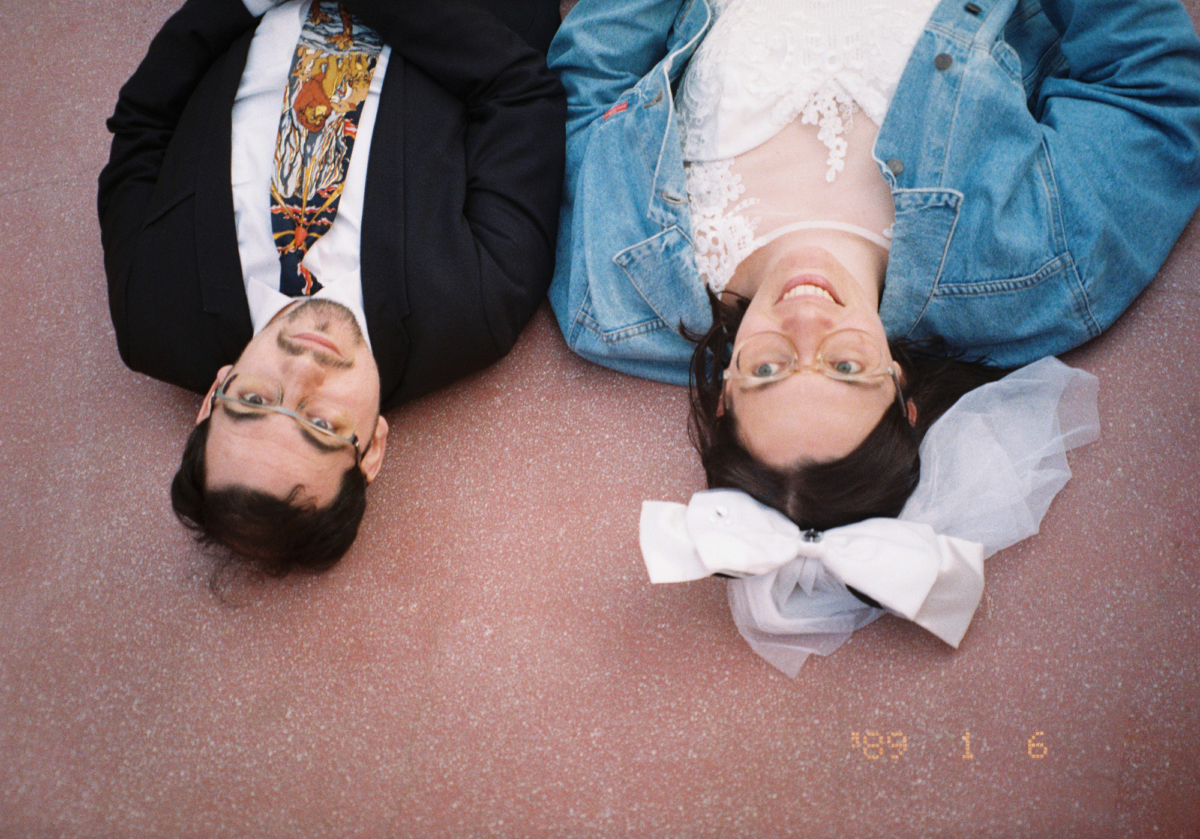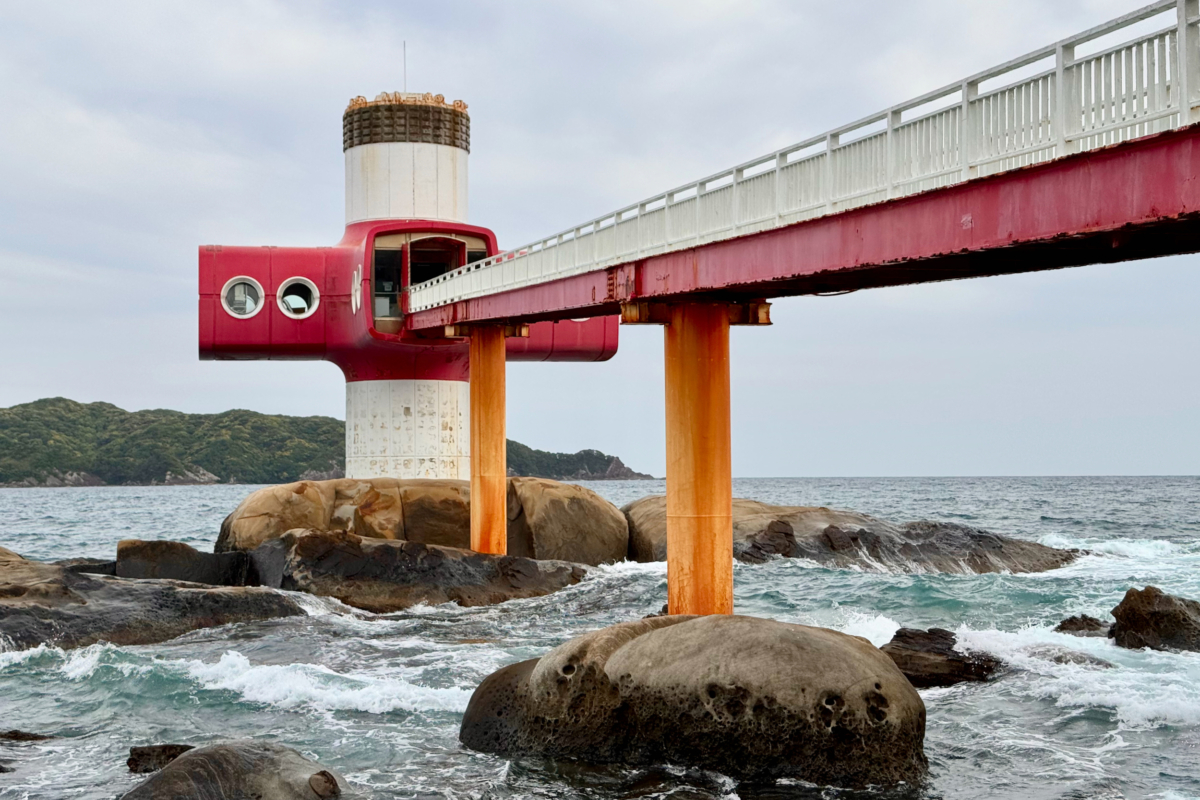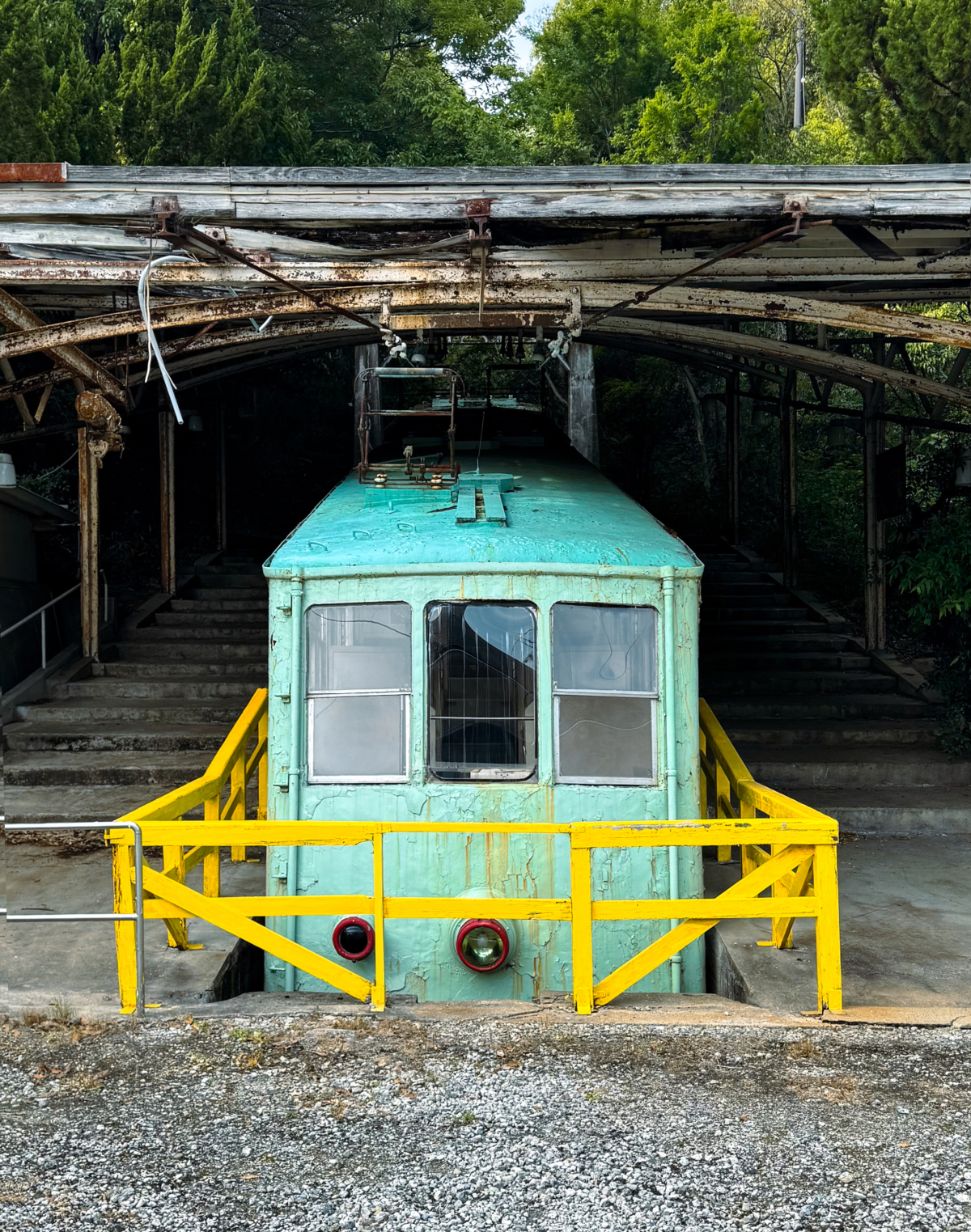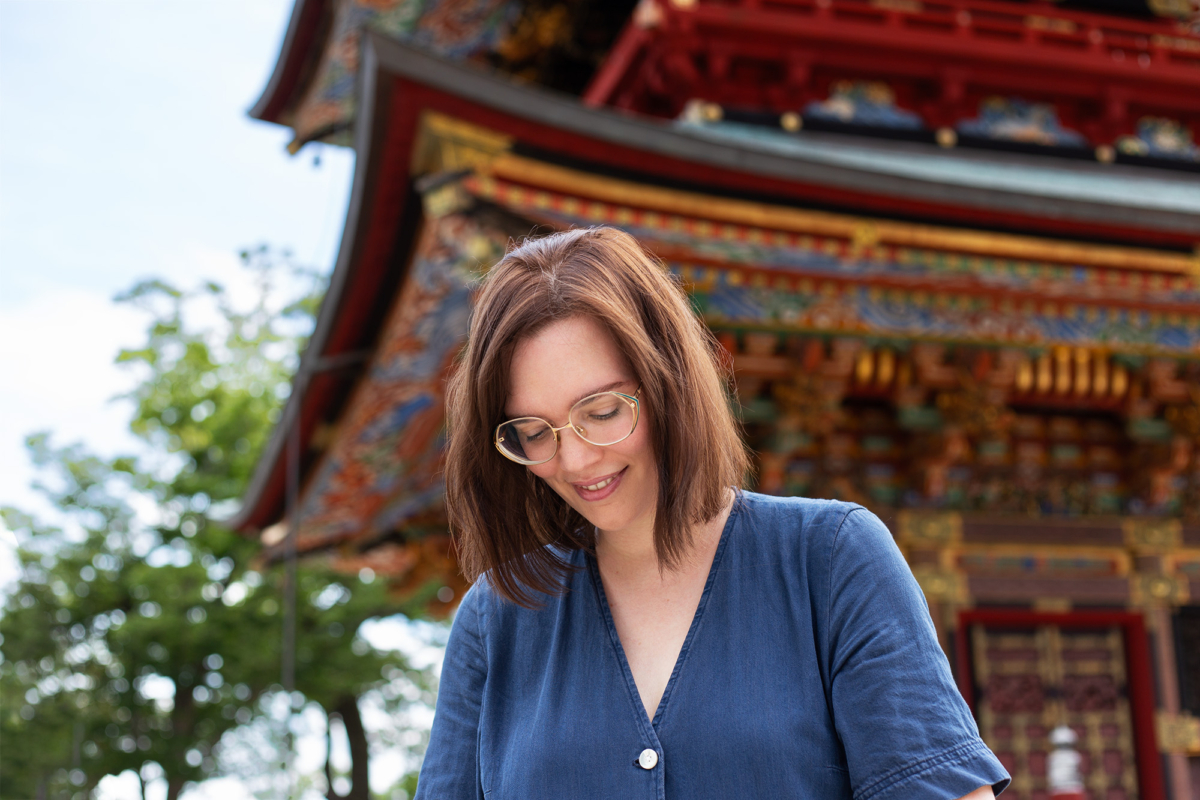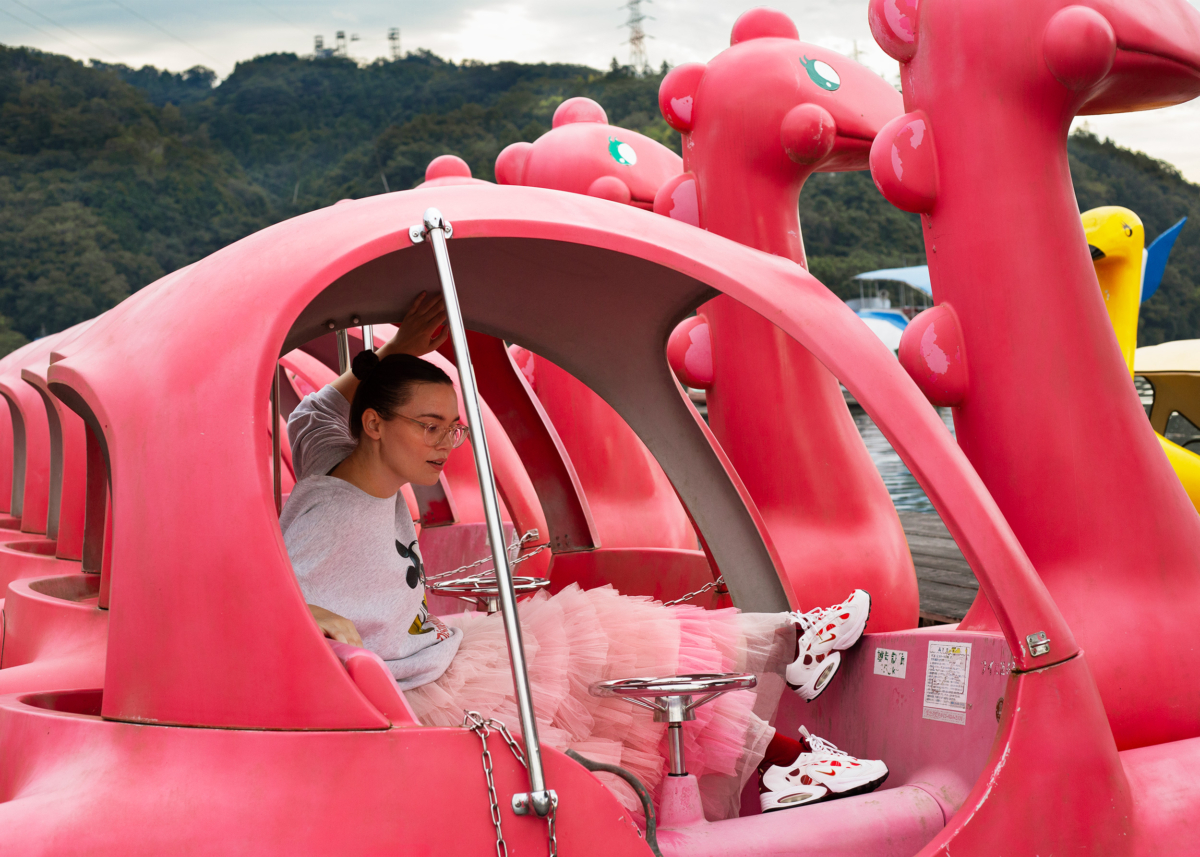Some time ago, I got an email from Ingrid. She had been following me on Instagram for a while and now wanted to hire me as a photographer. At first, that sounded like a regular job—I often do photoshoots in Japan, usually of couples, families, or friends visiting on vacation. But Ingrid had a special request: in honor of her and her husband’s wedding anniversary, the couple wanted to hold a Shinto wedding ceremony. I immediately felt a little wave of panic.
Shinto-wa?
In Japan, you could say there are basically two main religions: Buddhism and Shinto. (Of course, there are also Christians, Jews, and Muslims in Japan.) You might already be familiar with Buddhism—it’s about reaching enlightenment through things like meditation and letting go of desires. Shinto, on the other hand, is Japan’s native nature religion, centered around kami: gods or spirits believed to dwell everywhere—in nature, in objects, coming from one’s ancestors… Buddhism has temples, Shinto has shrines—though in Japan it’s sometimes hard to tell them apart. As a rule of thumb, Shinto shrines are marked by torii gates at the entrance, while Buddhist temples feature statues of Buddha. Anyway, back to the Shinto wedding ceremony.
“Uh, that’s going to be a bit tricky…!” I replied, sounding like the worst salesperson of my own services ever. A Shinto wedding ceremony—just arranging one for myself would already feel complicated. Where do you even start? Probably with a shrine? I had always assumed that ceremonies like these, with all their rituals and traditions, wouldn’t be accessible to foreigners anyway. And then how do you even get hold of a wedding kimono? Are you even allowed to take photos?
Sure, by now I speak a bit of Japanese, but organizing an entire wedding ceremony still felt far beyond my abilities. Ingrid, who didn’t speak a word of Japanese and had never been to Japan before, had a different approach. With the help of Google Translate, she emailed a shrine she found online. The shrine then put her in touch with a hair and makeup studio that also handled weddings. They, in turn, had connections with kimono rentals and even a rickshaw service. Somewhere along the way, she also managed to find an interpreter, which meant my role was reduced to just taking pictures. I was still a little nervous, but it seemed doable. (Just in case, I asked François to come along as my assistant—or rather, for moral support.)
A rehearsal for a glorious wedding ♪
A few days before the ceremony, we first had the rehearsal. I thought it would be smart to attend. Partly so I could meet everyone in advance, but also so the people from the shrine could shower me with instructions: “During this part you can’t take photos, during that part only from there, then you have to stand here…” Luckily, the shrine had videos online showing the entire ceremony acted out. Apparently, even Japanese people don’t always know what’s expected of them.
Ingrid and her husband had more homework than I did: they had to memorize their vows… in Japanese! The shrine provided a phonetic translation, I gave a few tips on pronunciation, and the interpreter even recorded the entire text for them so they could listen to it again.
Oh, and had I mentioned where it was? Asakusa Shrine! Yes, Ingrid hadn’t just googled some random little shrine. So while we were standing there rehearsing, we were stared at by dozens of coin-tossing tourists, all of whom seemed to be thinking: Why are they allowed in there and we’re not?!
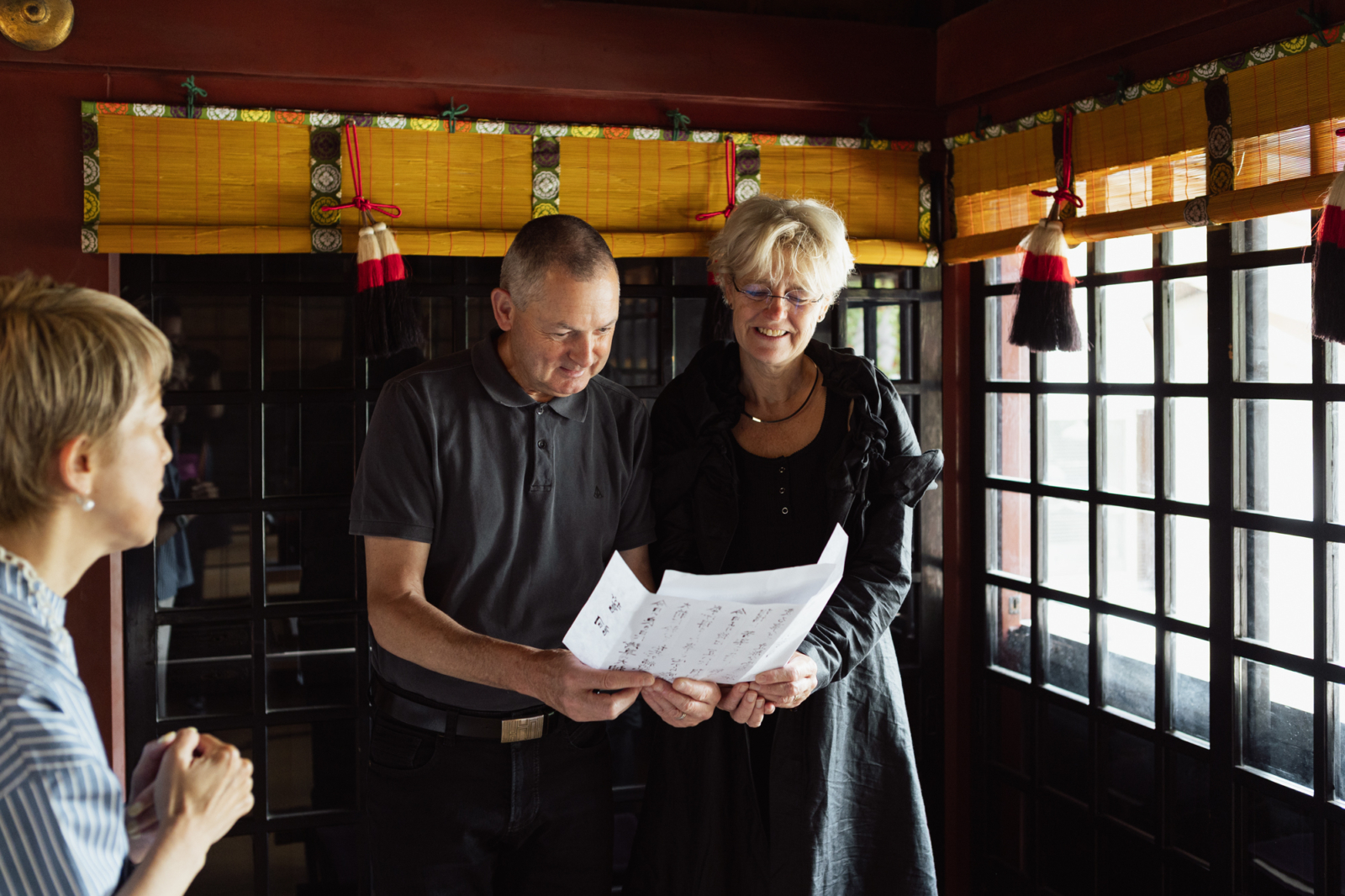
The big day
On the day of the ceremony, we first reported to the hair and makeup salon, where a special room had been set up to help the bride into her kimono. Earlier that week, Ingrid had visited the kimono rental together with her husband and the interpreter, and now she had a beautiful white wedding kimono waiting for her. Layer by layer she was dressed, and then it was the husband’s turn.
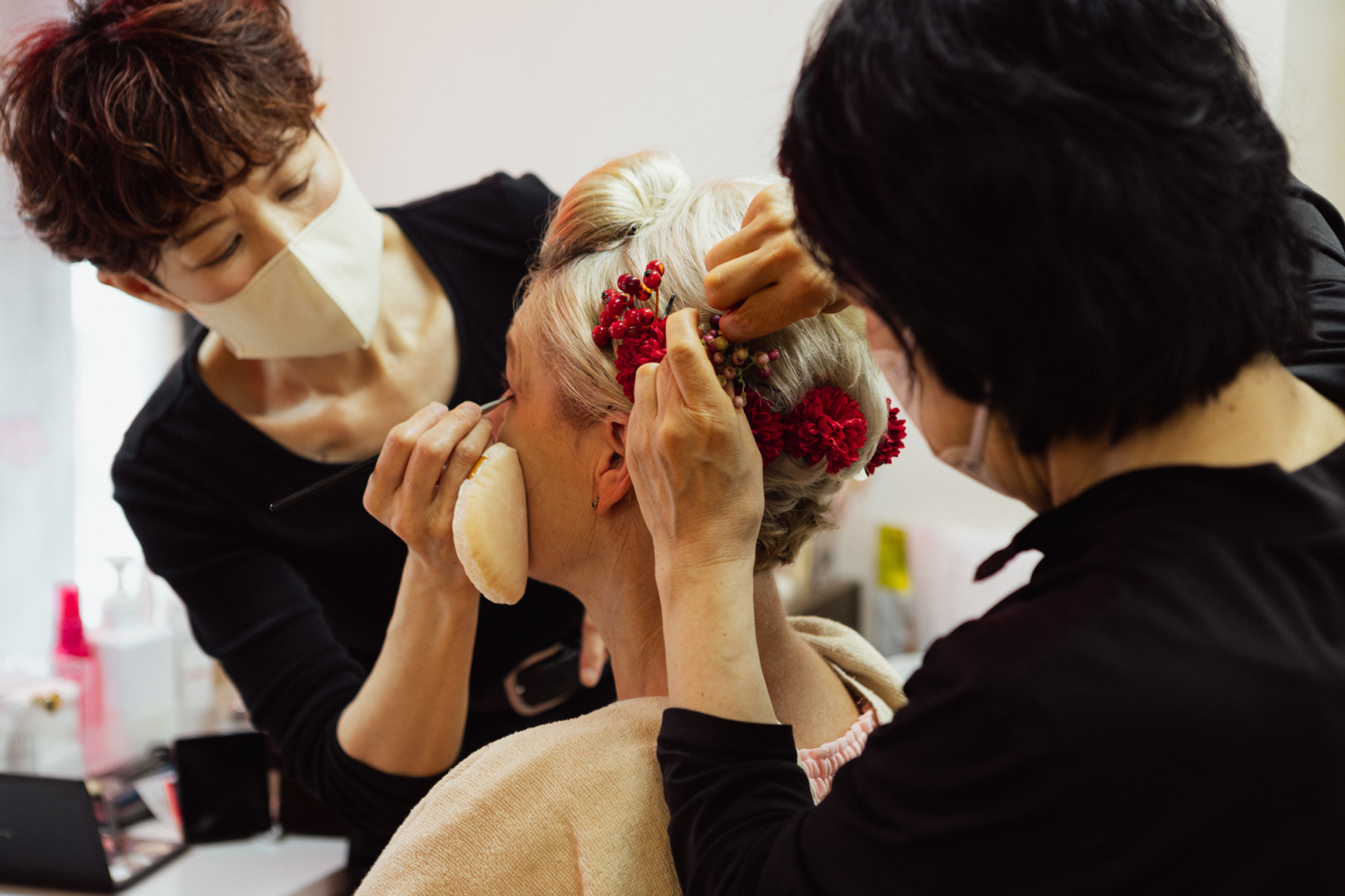
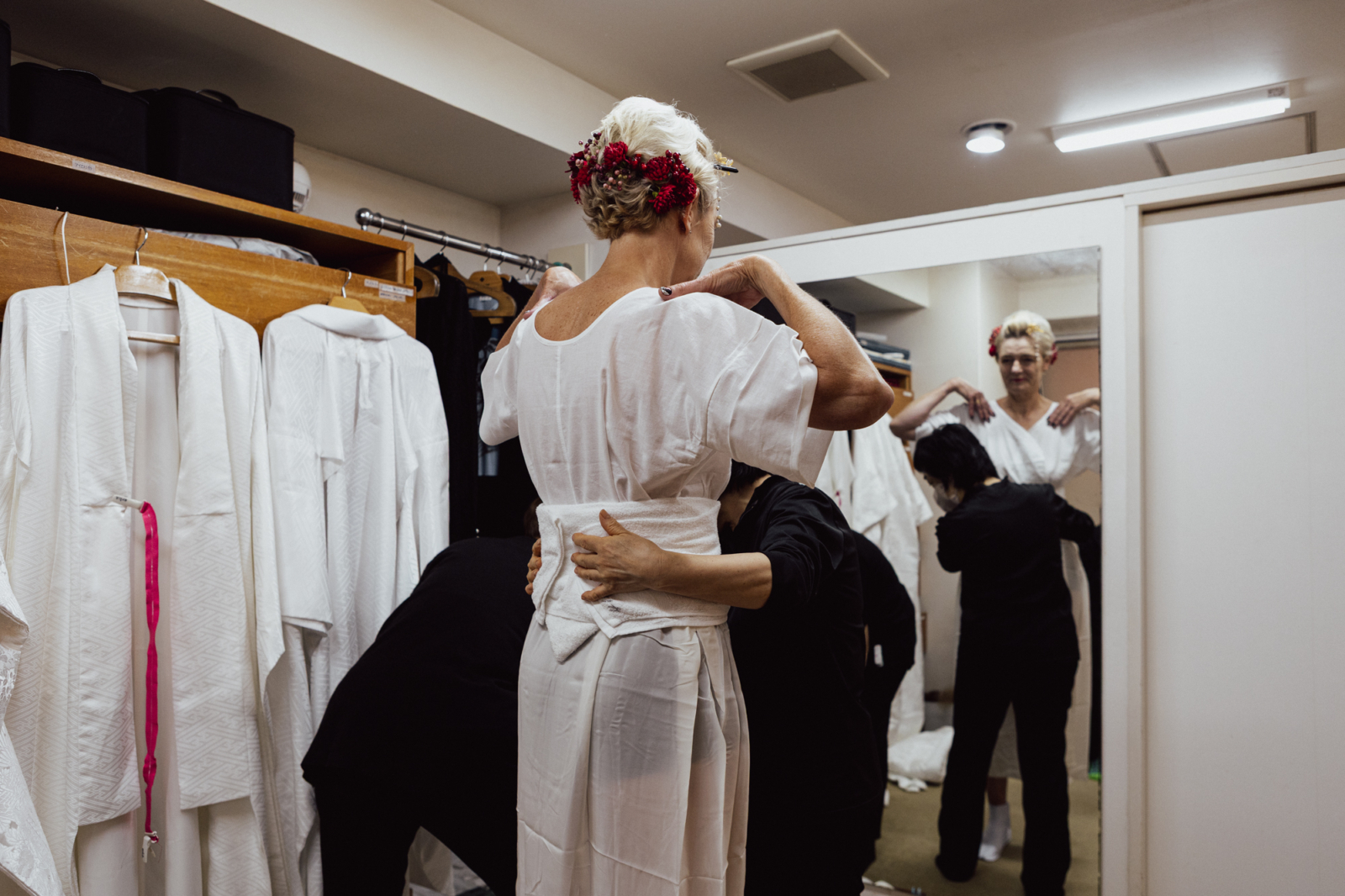
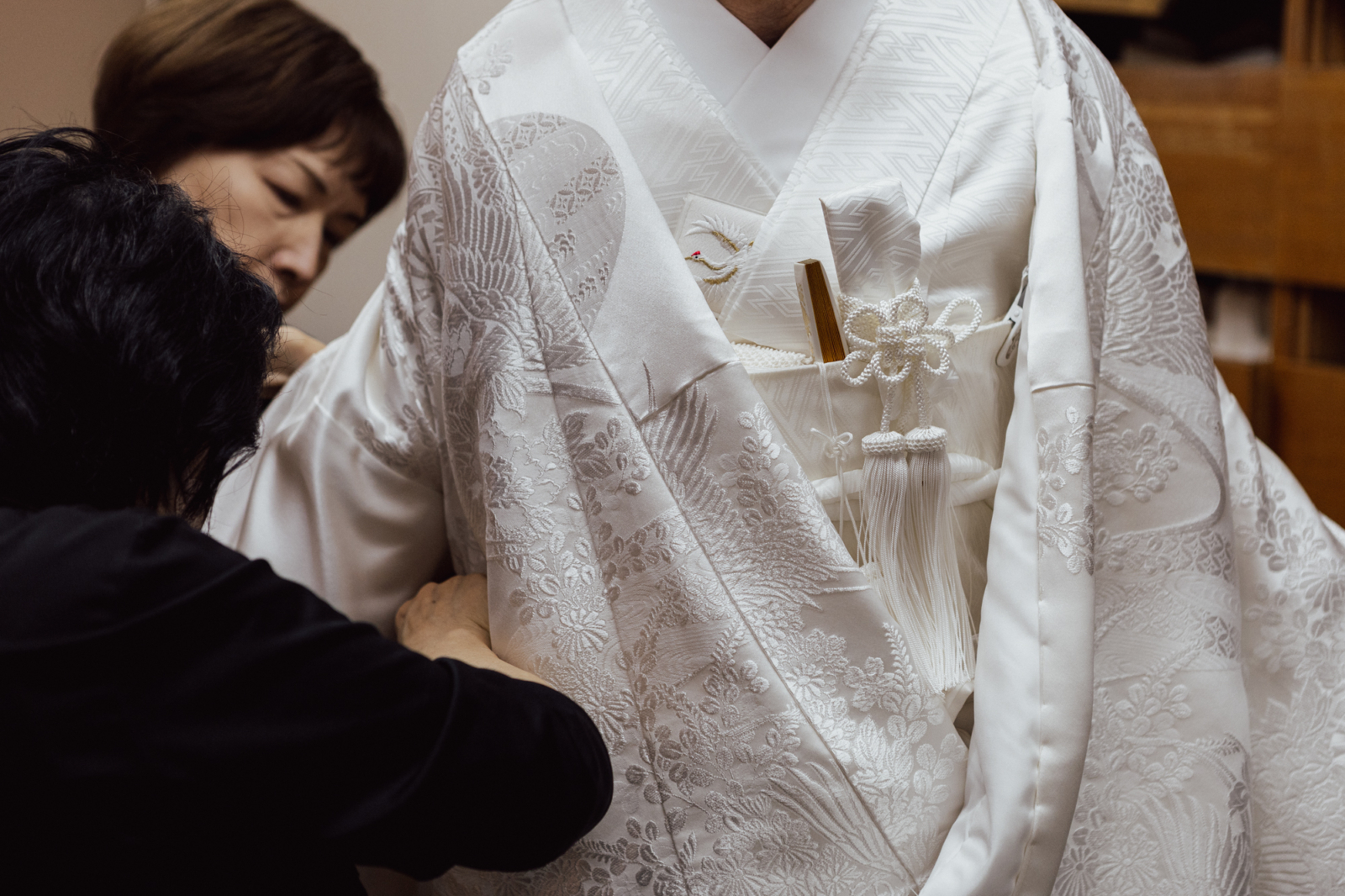
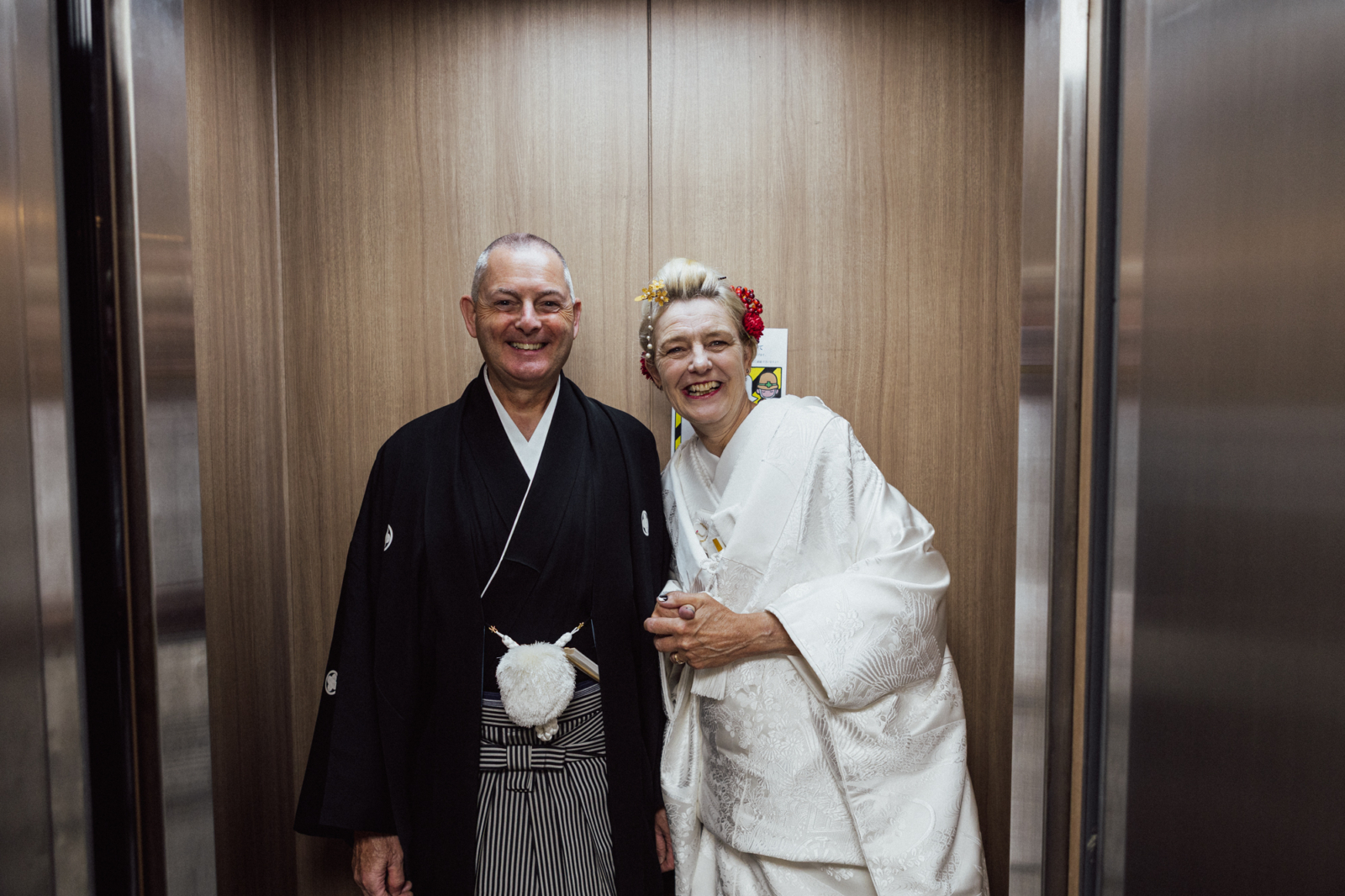
Photoshoot
Once they both looked impeccable, it was time for the first photo session. The lady from the salon showed us a few beautiful spots around Asakusa, where I captured the couple. Every now and then, the dresser stepped in to adjust the kimono.
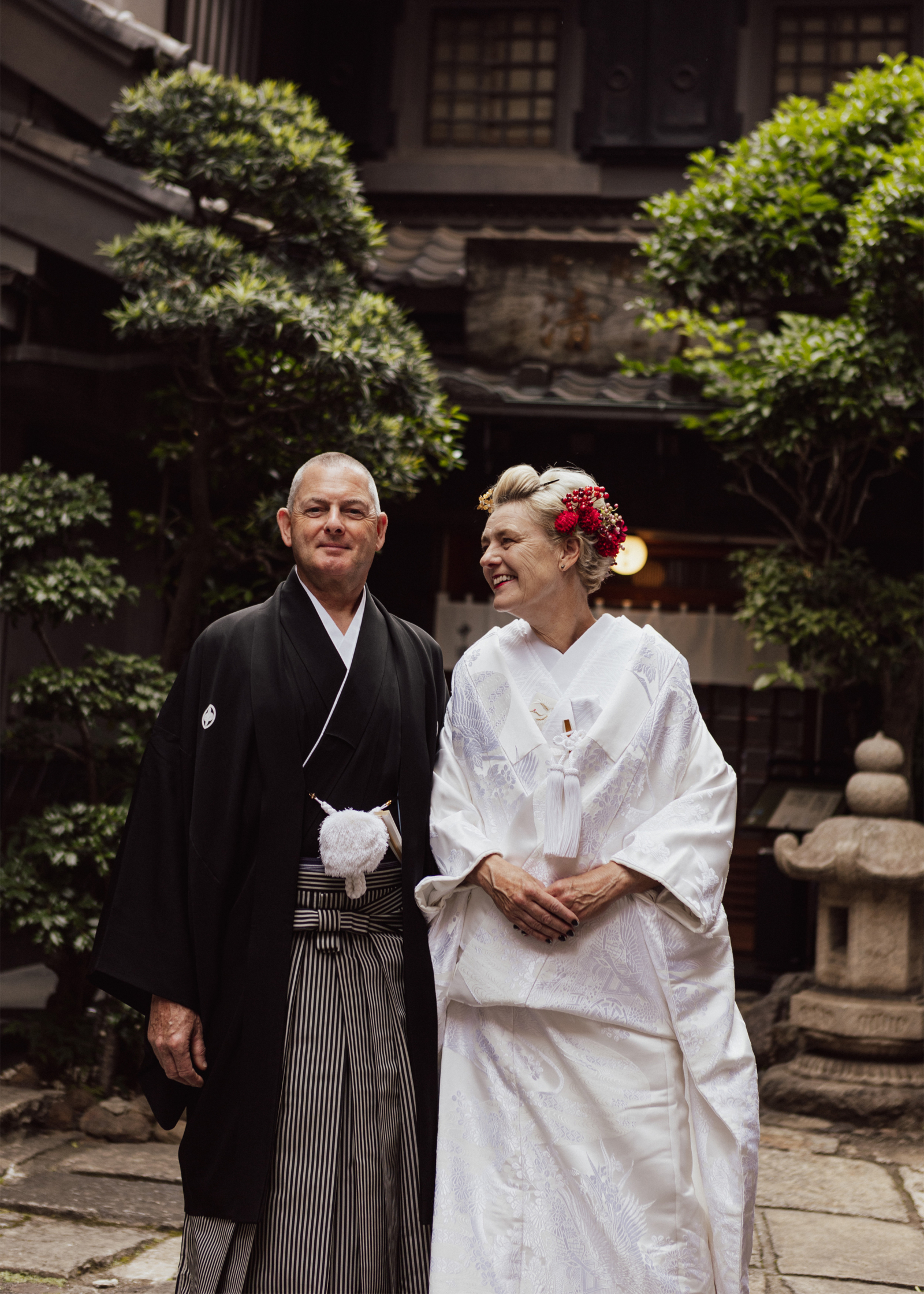
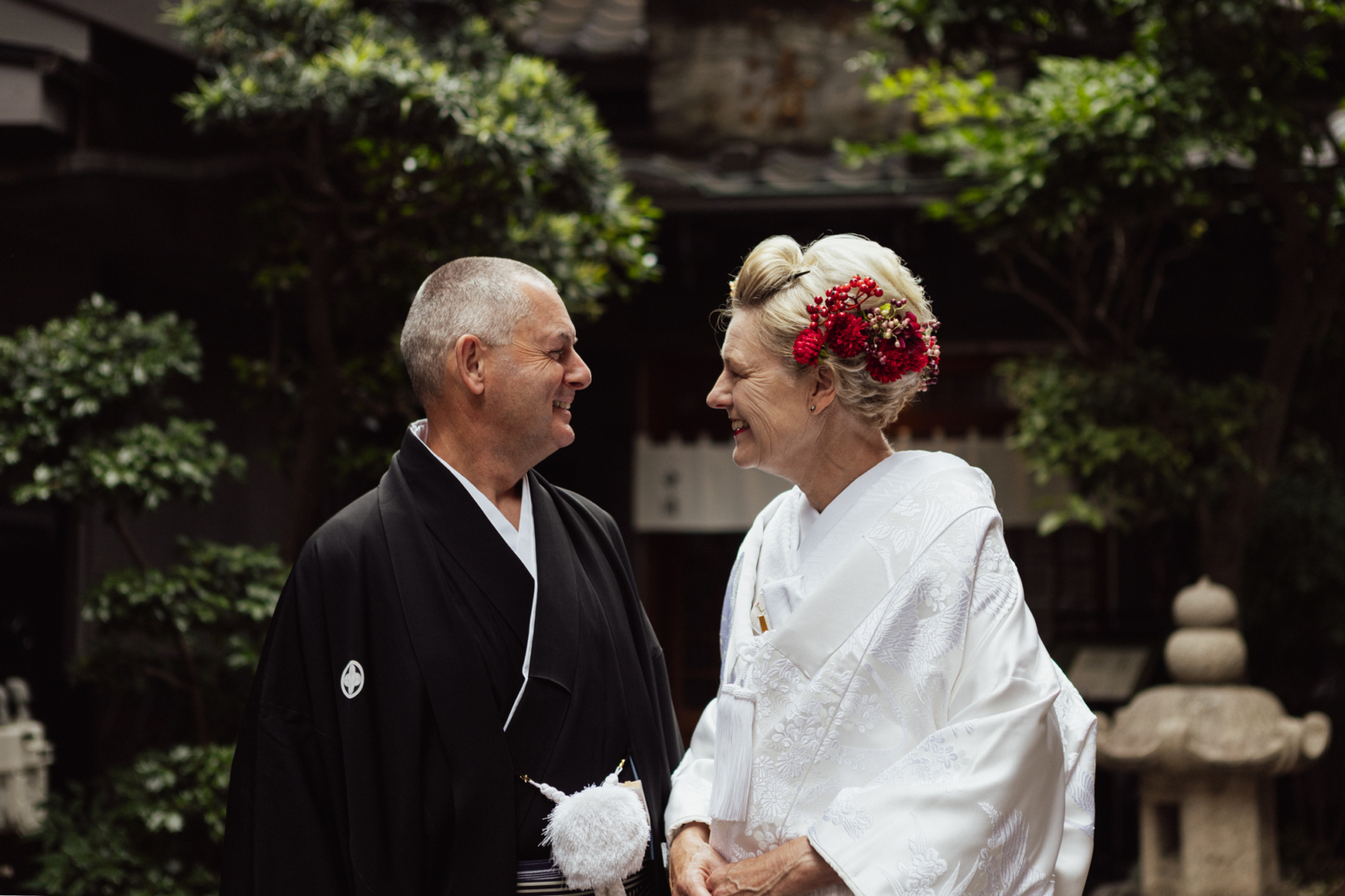
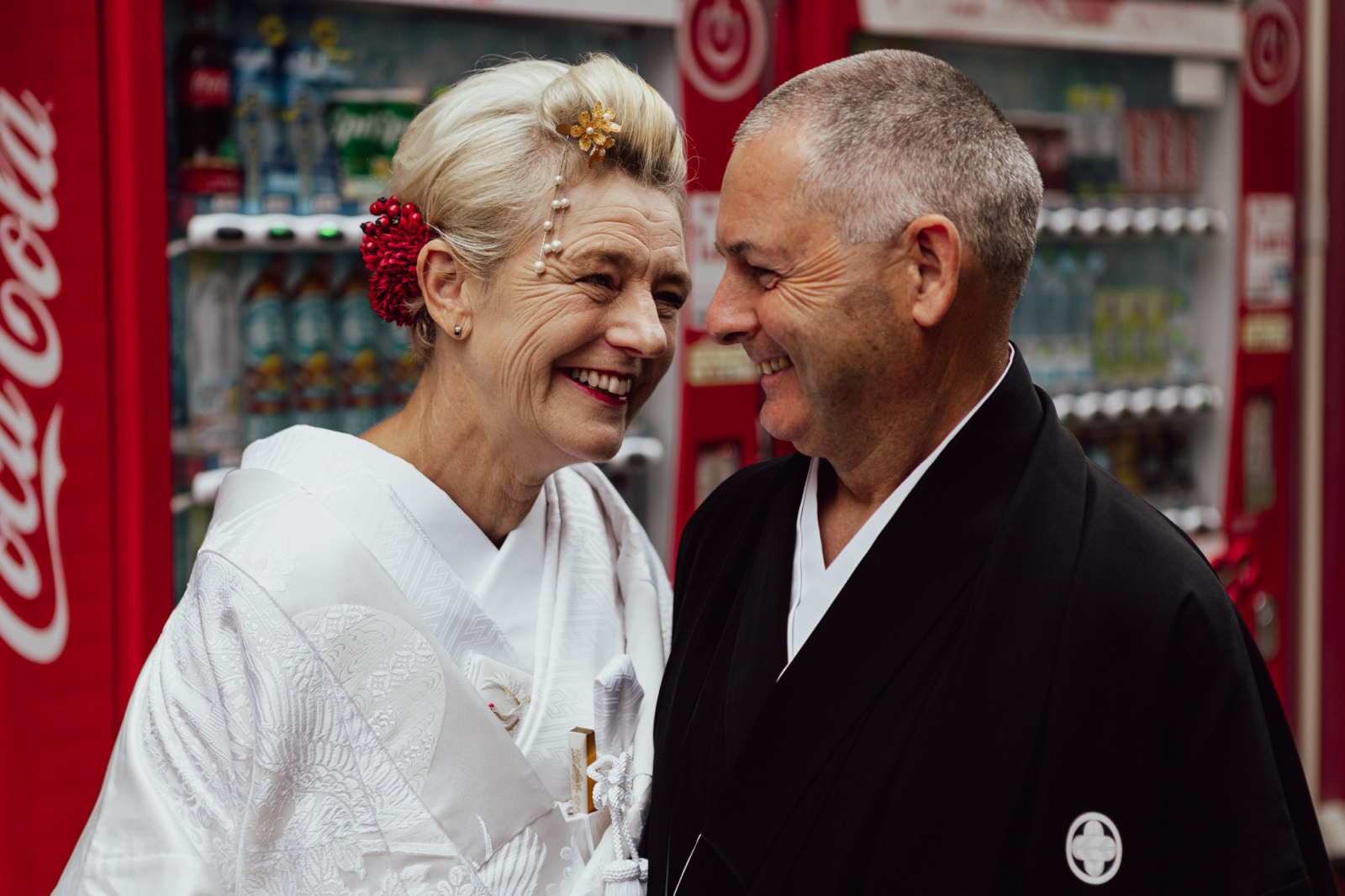
After the shoot, the couple was lifted onto the rickshaw, on their way to the shrine. I ran after them with my camera. Since it had started to rain, and I was worried about Ingrid’s makeup and kimono, I had given her my umbrella. François then ran behind me with his umbrella. Every now and then I barked instructions at him: “Keep it out of the frame! But do hold it above me!” Ah, the life of an assistant…
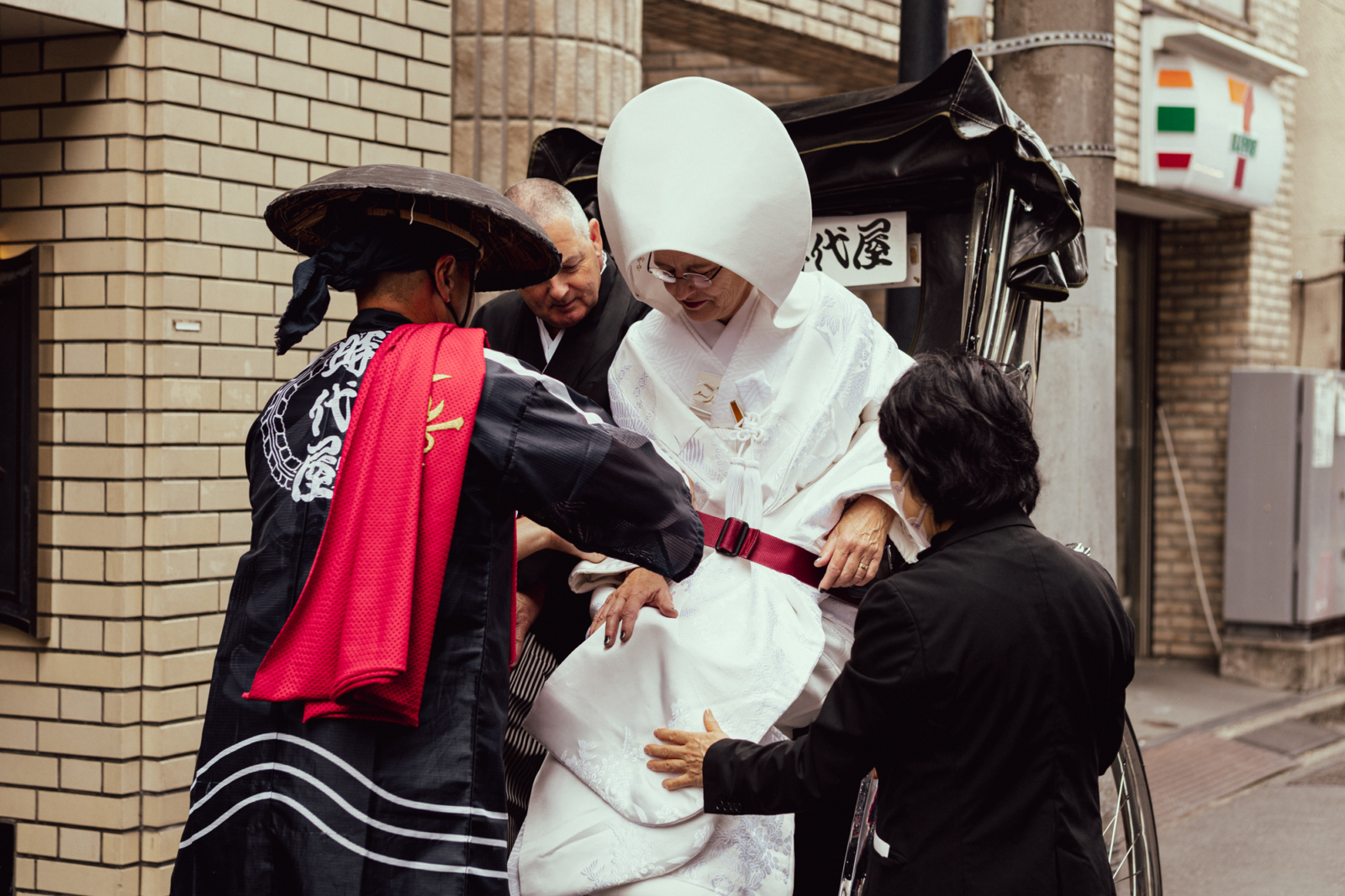
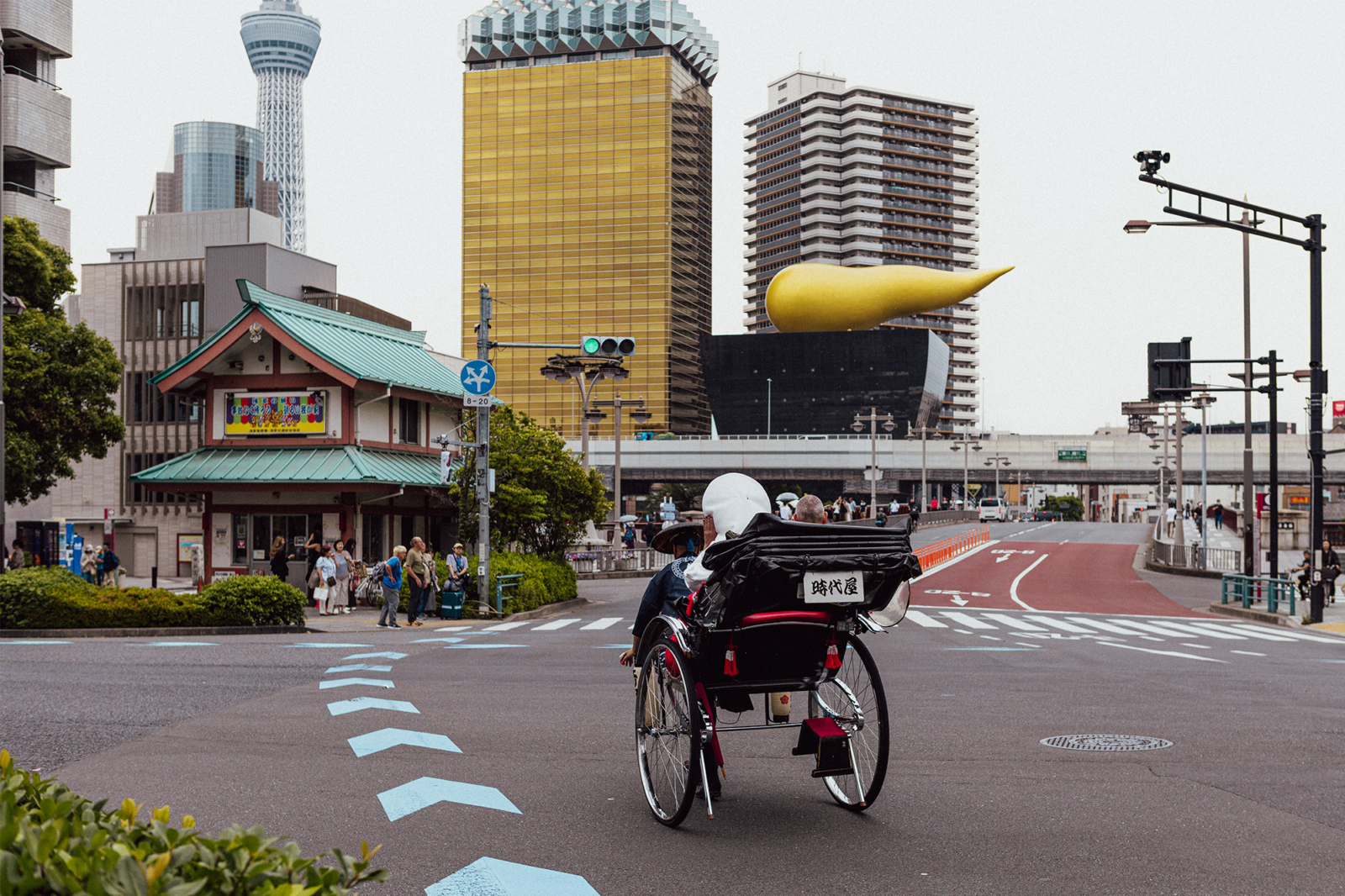
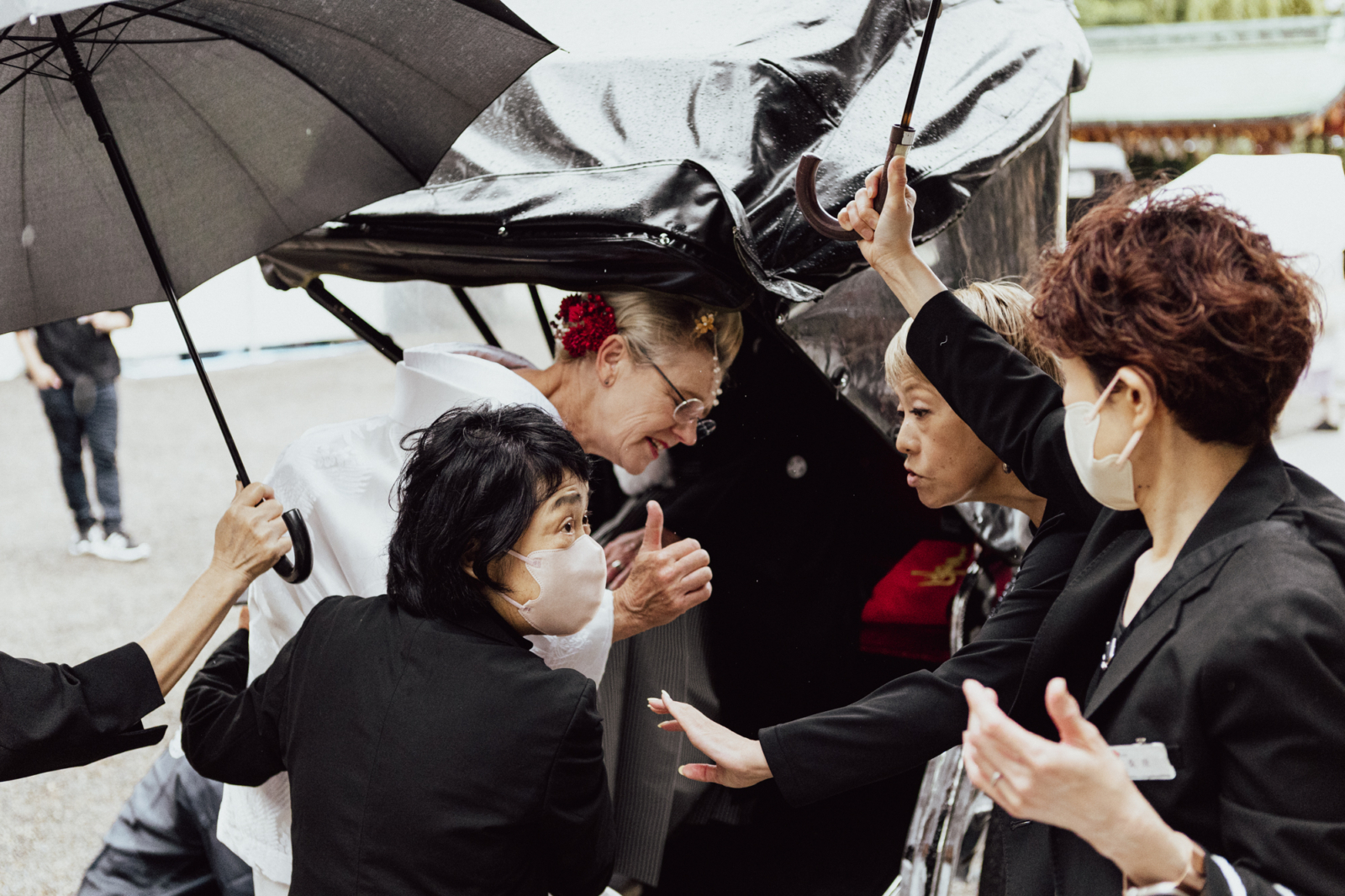
Once we arrived at the shrine, it was time for the ceremony. I took my designated spot. There wasn’t much room for creative shots, but luckily my new camera has a flip-out screen, which allowed me to sneak in a few angles from around the corner.
Ingrid and her husband recited their vows, exchanged rings, and drank the ceremonial sake. Due to the lack of guests, François and the interpreter were allowed to act as witnesses and place a sprig of the sakaki tree on the altar as an offering to the gods. Meanwhile, Ingrid’s and her husband’s families watched from the other side of the world via livestream. Yes, even Shinto shrines move with the times.
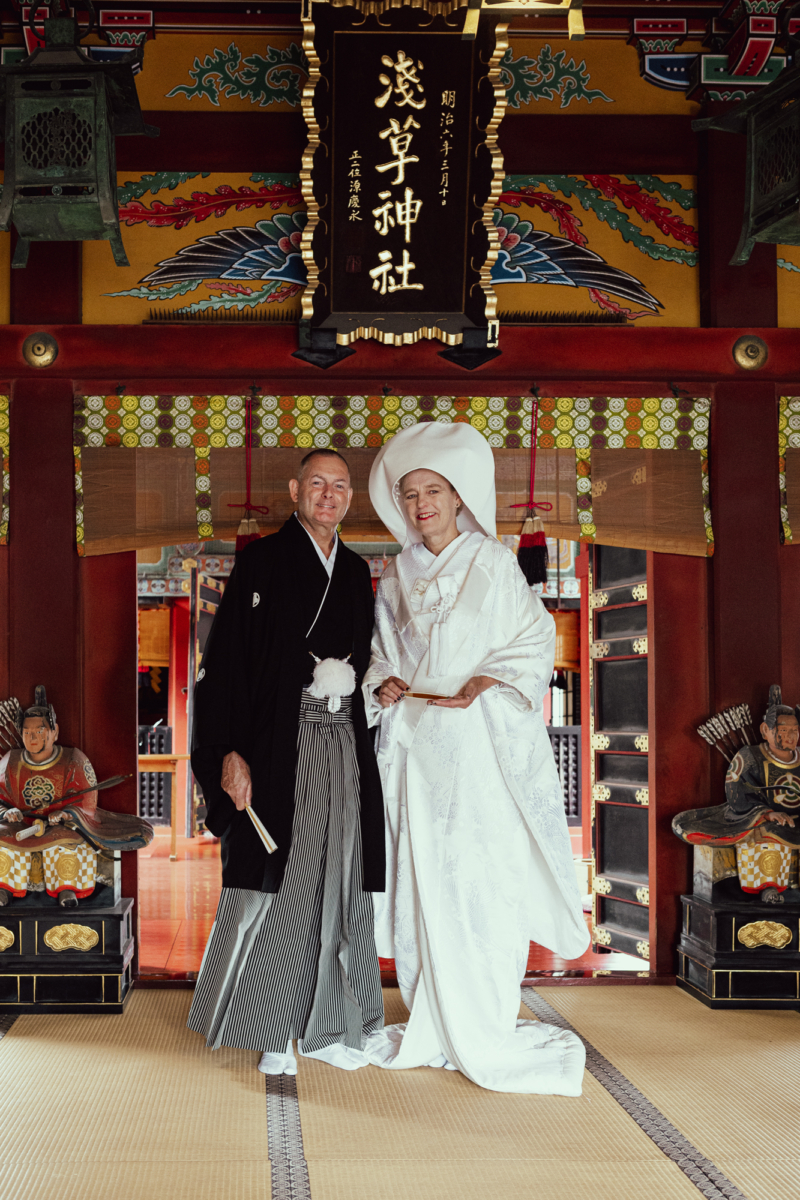
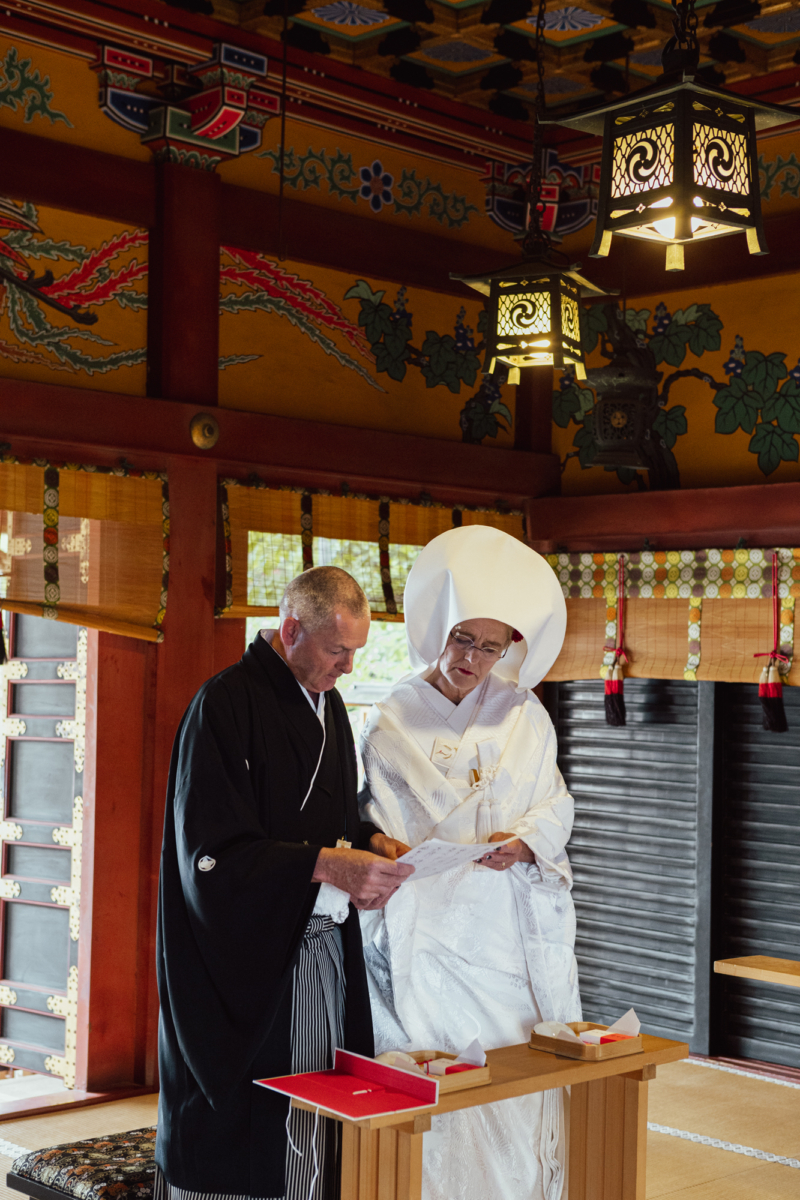
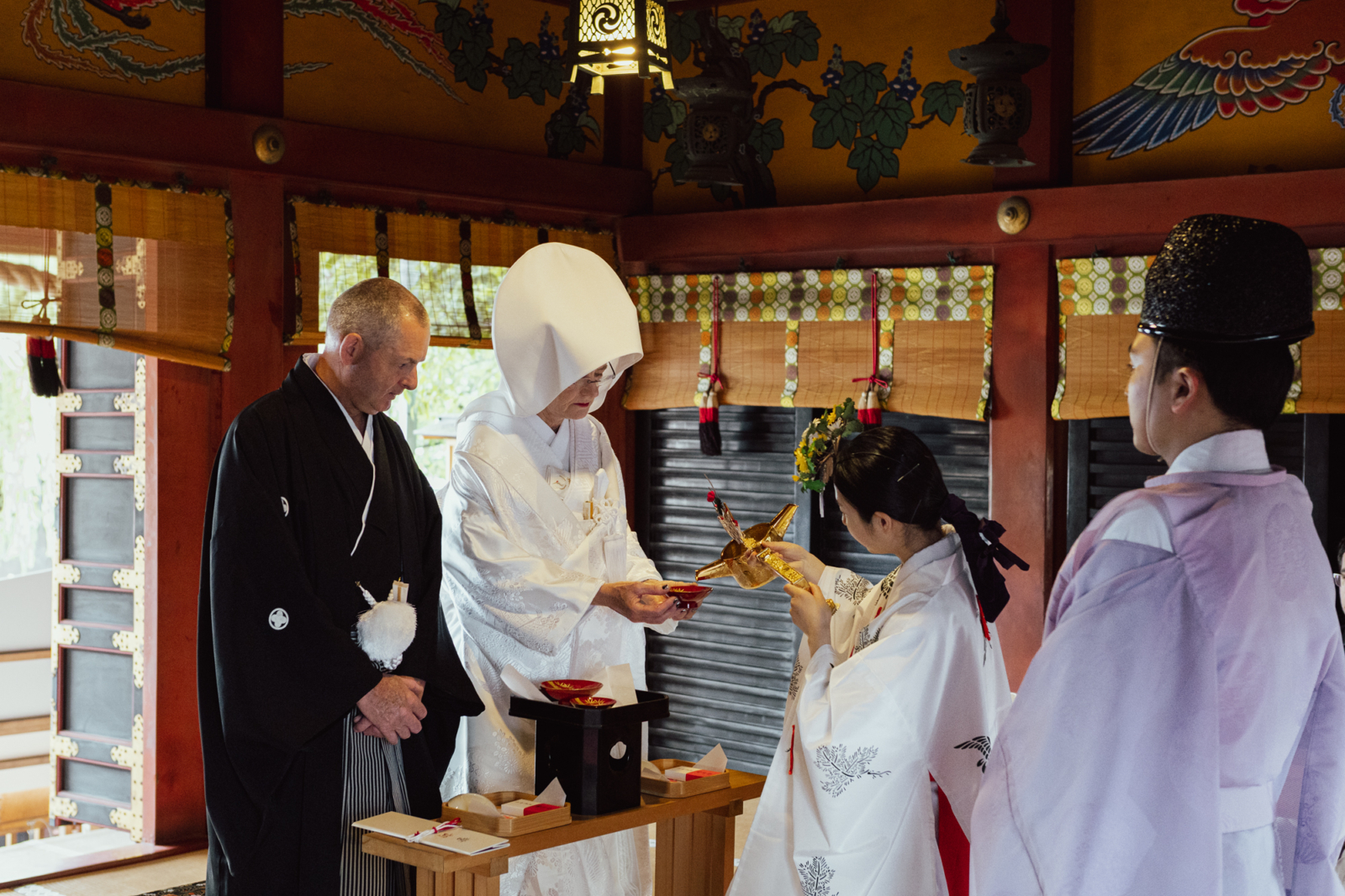
After the ceremony, I took a few more photos of the bride and groom, as well as the whole team. Then the happy couple climbed back into the rickshaw, heading to the salon. The plan had originally been to take some more photos in regular clothes, but since it was still raining and everyone was pretty exhausted, we decided instead to duck into a little café with the couple and the interpreter for some snacks and a beer. What a day.
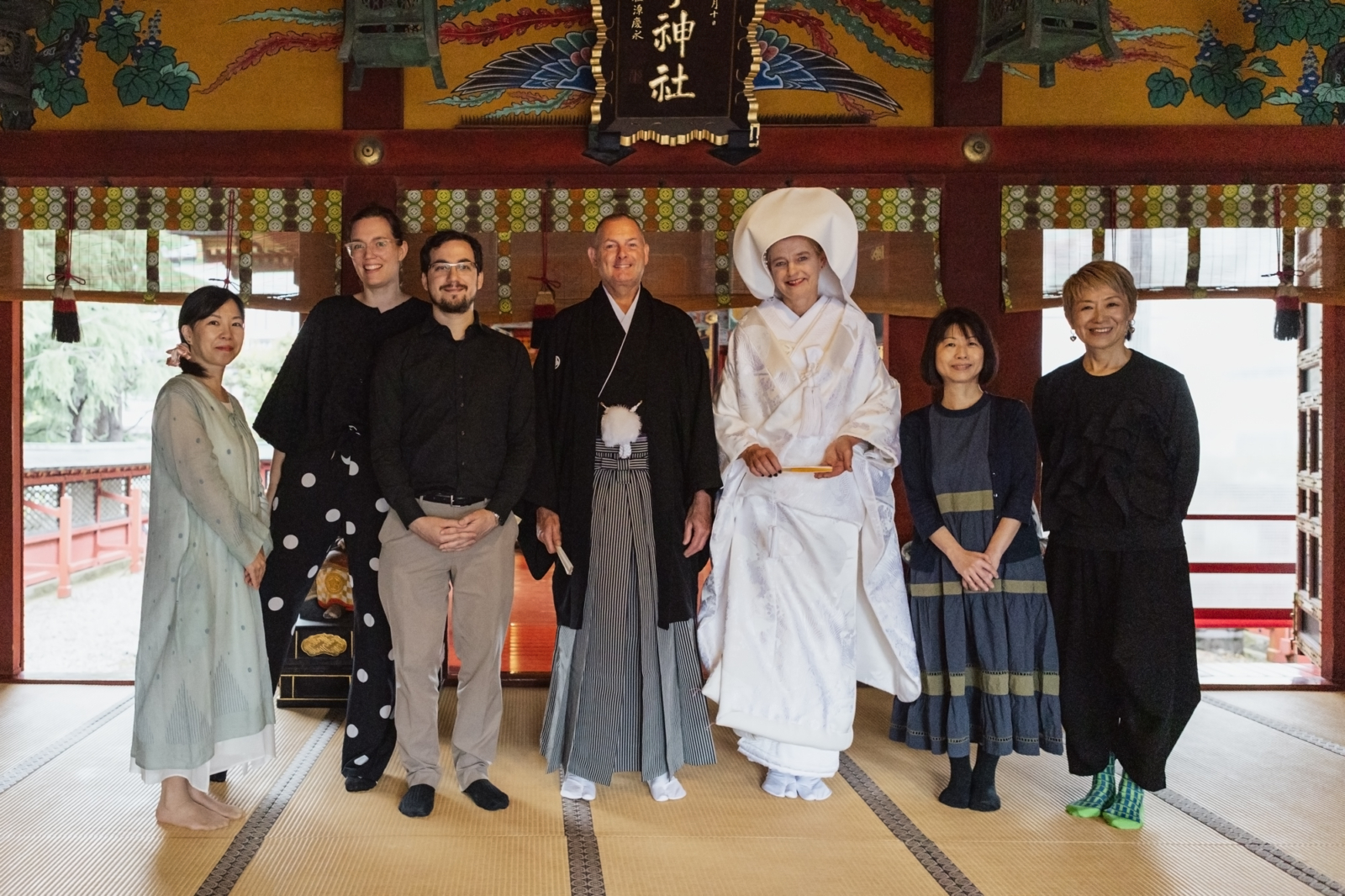
I want this!
Want to do a photoshoot in Japan too? Check out this page! If you’re coming in mid or late October, there might even be a chance to also book Charlotte for hair and makeup. (If, like Ingrid, you’d like a Shinto wedding—that part you’ll have to arrange yourself. But I can always help point you in the right direction!)
Whoa, so oldschool! An RSS feed!
Save this link in your RSS reader and follow my blog however you want it – chronological, in your mailbox, in your browser... Yes, the past is here!
https://www.toeps.nl/blog-en/feed/

